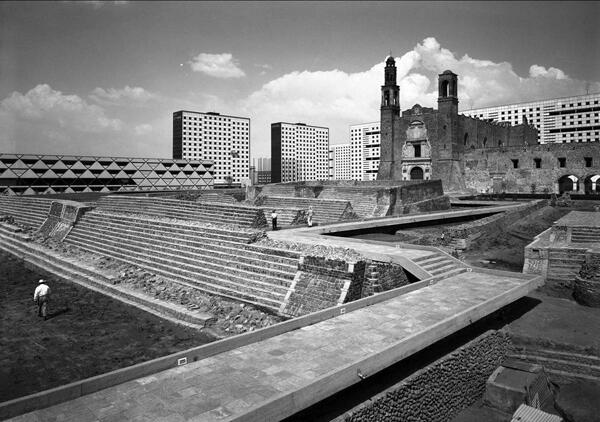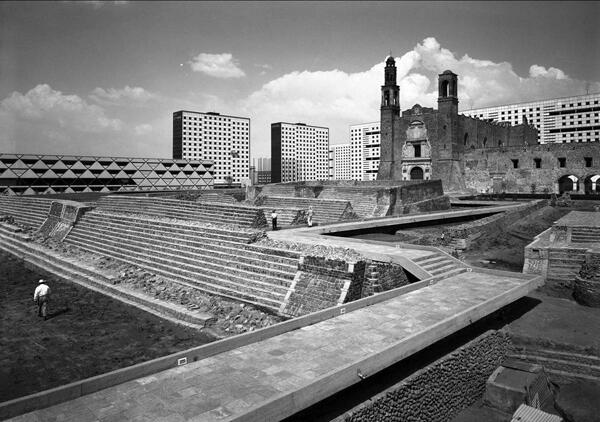Defying Stability: Artistic Processes in Mexico, 1952-1967
The decade and a half that followed 1952 was a time of flourishing intellectual and artistic activity in Mexico. Based on extensive historical and archival research, Defying Stability offers a polyhedral vision of a decisive period in cultural modernity that cannot be encompassed by the reductive concept of so-called “Rupture”.

The intense collaboration that took place between creators of different disciplines (photography, film, performing arts, literature, painting, sculpture) produced a cultural renovation that accompanied the emergence of new urban lifestyles and the radicalization of the imagination of the body. This is the story of the cultural experiment that was brought to an end by the crisis of 1968.
This curatorial project proposes to revisit these creative years, which were left stranded between the period emblematic of the nationalism in twentieth-century art in Mexico (1920-1940) and the events of 1968 and their aftermath. This broad investigation, drawn from different archives, will modify established ideas about and stereotypes of a little studied period.
Curatorial Structure
The curators Rita Eder, Angélica García, Pilar García, Cristóbal Andrés Jácome, Israel Rodríguez and Álvaro Vázquez Mantecón worked with a conceptual structure that will guide the public through the period, touching upon the most significant contributions to artistic creation during those years. 1) “Blurrings” refers to the process of undoing the lines between the arts, stressing processes of collaboration and highlighting transgressions across traditional artistic genres. 2) “Imaginaries” or the relationship to the international milieu with the aim of fracturing nationalism and exploring the problematics of the era and transposing them onto the Mexican scene. 3) “Corporealities”, or an emphasis on the body as a sign of a conceptual turn toward identity and territoriality. 4) “Modernizations”, or the State's adoption of strategies in architecture and the creation of cultural institutions, bolstering its image of modernization. This section also contains the development of the media, particularly advertising, and approaches the transformation of private life during a period of economic growth. 5) “Juxtapositions”, or the relationship between the modern and the uses of pre-Hispanic art, as well as the flowering of a new spirituality. 6) “New Circuits”, or the transformation of Mexico City and the decentralization of cultural institutions, particularly the galleries that occupied other spaces and gave way to new lifestyles. This section emphasizes the UNAM as an alternative site of the first importance.
Defying Stability
The title of the exhibition has its raison d'être in the counterpoint between the arts and the State. Its protagonists worked at the margins of the official image of Mexican culture. Defying Stability encompasses the period known in the economic and political history of Mexico as "stabilizing development," and presents the State's major projects, both architectural and in terms of the creation of cultural institutions; likewise, it emphasizes the social problems that crystallized around these projects and analyzes resistance to a modernization that was superimposed atop social inequality and conflict.
The exhibition is accompanied by an extensive, 500-page catalogue which includes curatorial texts, essays and brief texts by approximately 30 specialists on the subject.
The Intersections Between Modern Art, Modernism, and Contemporary Art
During this period, the intersections between modernity as a political and aesthetic project, the high modernism linked to an internationalism accentuated by the arrival of European and Latin American artists to Mexico, and the boundaries of contemporary art all intersected. Without a doubt, this is a matter of debate that will interest the public and cultural critics alike.
Artists
Manuel Álvarez Bravo, Inés Arredondo, Luis Barragán, Feliciano Bejar, Enrique Bostelmann, Guillermina Bravo, Luis Buñuel, Félix Candela, Leonora Carrington, Arnaldo Cohen, José Luis Cuevas, Felipe Ehrenberg, Salvador Elizondo, Helen Escobedo, Manuel Felguérez, Pedro Friedeberg, Carlos Fuentes, Rubén Gamez, Jomi García Ascot, Fernando García Ponce, Juan García Ponce, Gelsen Gas, Gunther Gerzso, Alberto Gironella, Alan Glass, Mathias Goeritz, Juan José Gurrola, Luisa Josefina Hernández, Kati y José Horna, Alejandro Jodorowsky, Juan Vicente Melo, Carlos Mérida, Rodrigo Moya, Mario Pani, Wolfgang Paalen, Pedro Ramírez Vázquez, Margaret Randall, Diego Rivera, Vicente Rojo, Armando Salas Portugal, Kazuya Sakai, Tomás Segovia, Beatriz Sheridan, Rufino Tamayo, Remedios Varo, and others.
........................................
Galleries 4, 5, 6, 7, 8, and 9
March 27 – August 3, 2014
-
 Remolino– Whirlwind, 1965. Tinta, gouache y collage sobre cartulina–ink, gouache and collage on poster board, 50 x 50 cm. Galería López Quiroga. D.R.© Pedro Friedeberg/México/2013. Fotografía–Photography: Gerardo Vázquez Miranda, AFMT-IIE-UNAM.
Remolino– Whirlwind, 1965. Tinta, gouache y collage sobre cartulina–ink, gouache and collage on poster board, 50 x 50 cm. Galería López Quiroga. D.R.© Pedro Friedeberg/México/2013. Fotografía–Photography: Gerardo Vázquez Miranda, AFMT-IIE-UNAM. -
 Plaza de las Tres Culturas, 1966. Fotografía–Photography. Reproducción autorizada por la–Reproduction authorized by Fundación Archivo Armando Salas Portugal.
Plaza de las Tres Culturas, 1966. Fotografía–Photography. Reproducción autorizada por la–Reproduction authorized by Fundación Archivo Armando Salas Portugal. -
 Mural de hierro–Iron Mural, 1961. Ensamblaje de chatarra de metal adosado a muro–assemblage of scrap metal leaned against a wall, 3.80 x 28.45 x 0.63 m. Colección particular–Private collection. Fotografía–Photography: Archivo Manuel Felguérez. D.R.© Manuel Felguérez /Somaap/México/2013.
Mural de hierro–Iron Mural, 1961. Ensamblaje de chatarra de metal adosado a muro–assemblage of scrap metal leaned against a wall, 3.80 x 28.45 x 0.63 m. Colección particular–Private collection. Fotografía–Photography: Archivo Manuel Felguérez. D.R.© Manuel Felguérez /Somaap/México/2013.




